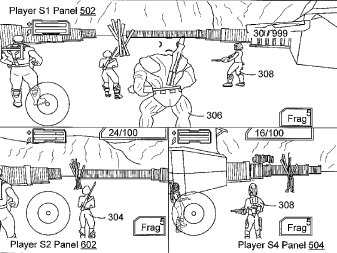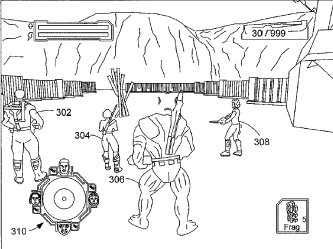Microsoft granted drop-in, drop-out co-op patent
United States Patent and Trademark Office approves publisher's 2002 application for specific method of joint play in squad-based third-person shooters.
One would think that cooperative gaming is more of a right than a feature in this age of networked gaming, but the way in which it is implemented is apparently something Microsoft wants exclusive claim to. Last week, the United States Patent and Trademark Office approved Microsoft's application, filed originally in 2002, to implement a specific method of drop-in, drop-out cooperative gaming for squad-based third-person shooters.

As related by the patent, Microsoft seeks to solve the problem of getting additional players into and out of a game without disrupting the flow of play. "Conventional shooter games require that the existing players stop and save the game, return to a setup menu and specify the new number of player(s), and then restart the game," states the filing. "This process is disruptive to the players."
To rectify this problem, Microsoft's patent describes a way in which players can dynamically join and depart an existing squad-based shooter, without the need to restart the game. Namely, the patent states that when in single-player mode, the lone gamer views the action in full screen and will directly control a primary character while issuing orders to the rest of the squad, which is manned by artificial intelligence.
As play progresses, the game actively monitors for new gamers wishing to join. When a new player is detected, he or she is then seamlessly given control of one of the squad members, and the display subsequently switches to split-screen mode. The patent notes that additional players can join, with the screen continuing to split to accommodate the appropriate number of combatants.

And as players can dynamically enter the game, so too can they seamlessly exit. When the game detects that a player has exited the game, control of the character in the player's charge is automatically reverted back to the AI, and the display reverts back to its original size.
Along with the patent, the publisher included a number of concept drawings of what the functionality might look like. Clearly modeled after Digital Anvil's Brute Force, which Microsoft Game Studios published for the original Xbox in 2003, the drawings show the screen in various stages of furcation.
The patent does not specifically call out whether the feature is applicable to local or online play. Microsoft had not commented on how it intends to implement the patent as of press time.
Got a news tip or want to contact us directly? Email news@gamespot.com
Join the conversation